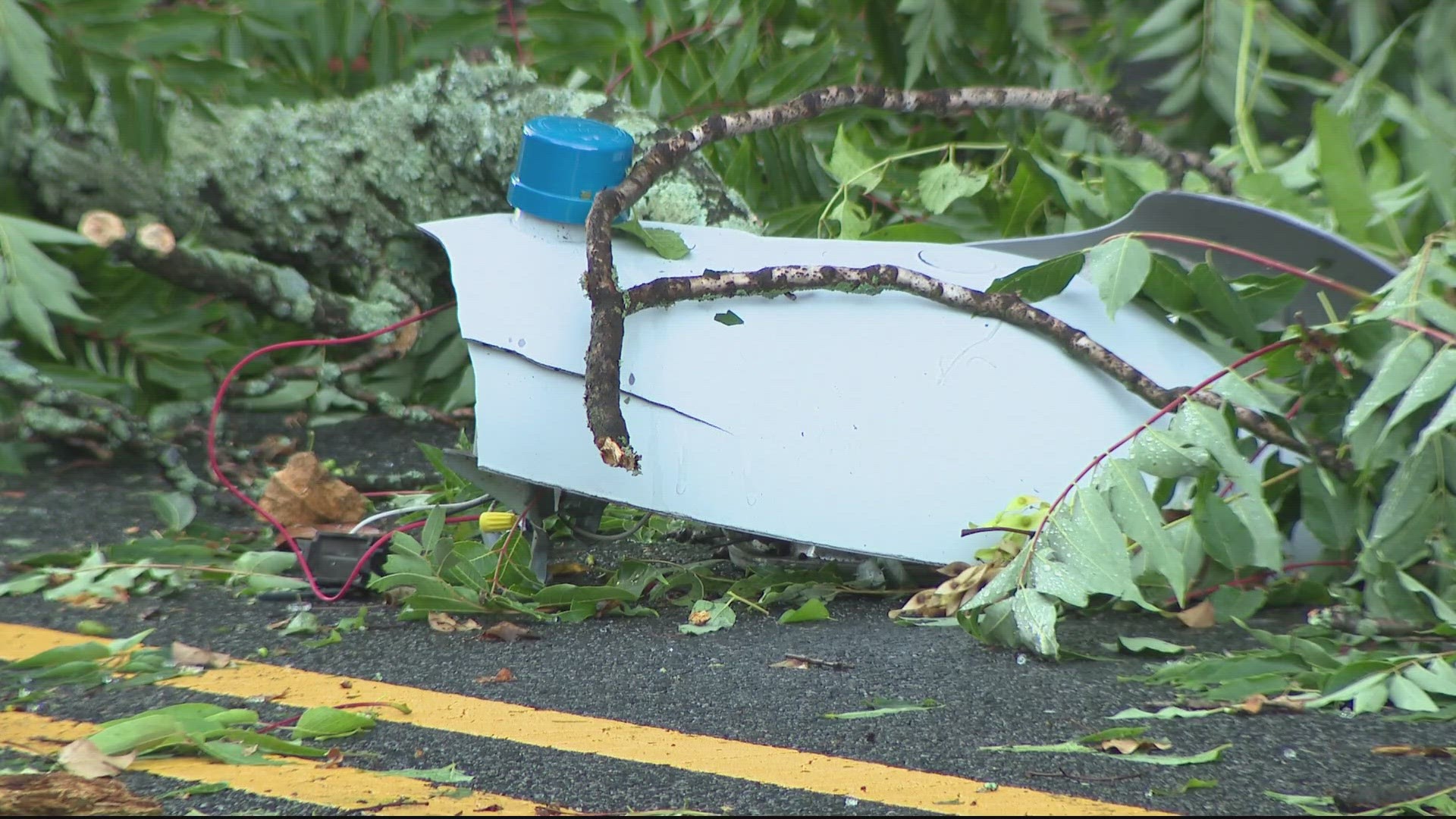WASHINGTON — The winds were fast. They were furious. And no area was left out of the storm's path Saturday evening, as everything was up for nature's taking.
Destructive storms blew through the D.C., Maryland and Virginia region Saturday uprooting trees, knocking out power lines and leaving many in the dark, both literally and figuratively. The question that left everyone puzzled: what caused these damaging winds?
It was a question that some people took to social media. Though some comments on these posts claimed tornadoes or a derecho caused those strong winds, WUSA9 meteorologists say that was not the case.
Tornadoes were not detected during Saturday's storm. Just as important, the storm was also not classified as a derecho. That means that the thunderstorm winds were likely caused by downburst winds.
What are Downburst Winds?
Downburst winds are an outward burst of strong winds that push out of a thunderstorm. Macrobursts and microbursts are types of downburst winds. According to the National Severe Storms Laboratory, a macroburst is a larger burst of air coming out of a storm.
"A macroburst is an outward burst of strong winds at or near the surface with horizontal dimensions larger than 4 km (2.5 mi) and occurs when a strong downdraft reaches the surface," experts wrote on the NSSL website.
To get an idea of how this works, imagine a hair dryer and air pushing out of it, blowing your hair around as it makes contact with your head.
A microburst is a smaller, more concentrated burst of air out of storm.
Forecasters at the National Weather Service in D.C. who monitored radar during the storm said it was likely "a family of microburst and macroburst" that marched across the area.
Radar estimates that some winds in Saturday's storms were between 70 and 80 miles per hour. Downburst winds can be stronger than 100 miles per hour.
How Do These Winds Form?
Storms have an updraft and a downdraft. Think of an updraft as the vacuum cleaner of the storm, as this is where air rises. Think of the downdraft as the blow dryer of the storm, where air pushes out. The updraft and downdraft work side by side in a storm. When the air is too dense or "heavy" in the downdraft , it quickly falls to the ground where it violently fans out as potentially damaging winds.
Hot temperatures and humid conditions aided in making the atmosphere unstable enough to support stronger storms capable of producing these types of winds.
Why wasn't it considered a tornado or derecho?
It's common for people who experience wind damage and assume that a tornado caused it. After all, tornadoes usually show a certain signature on radar, but this was not detected during Saturdays' storms.
But remember this, tornado wind damage usually occurs in a circular pattern, while downburst winds leaves damage falling in the same or similar direction.
To be classified as a "derecho" there is very strict criteria that has to be met. The storm must produce damage for a swath of at least 240 miles with wind gusts of at least 58 miles per hour. That did not happen Saturday.



